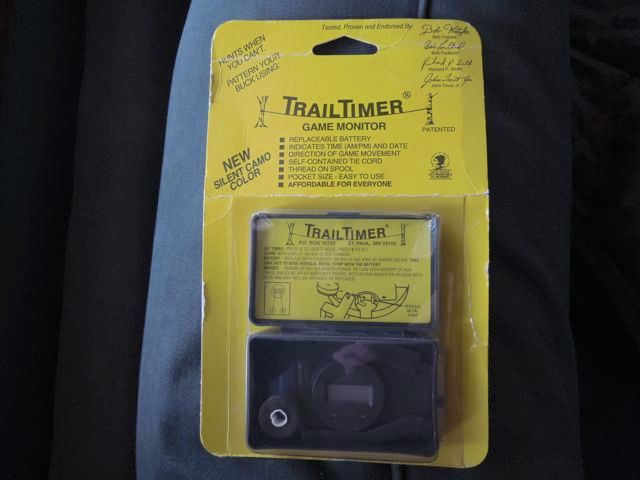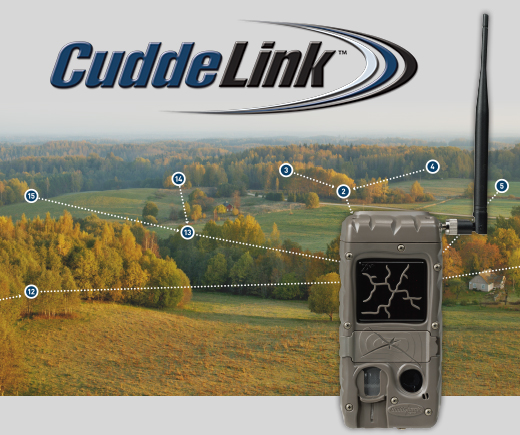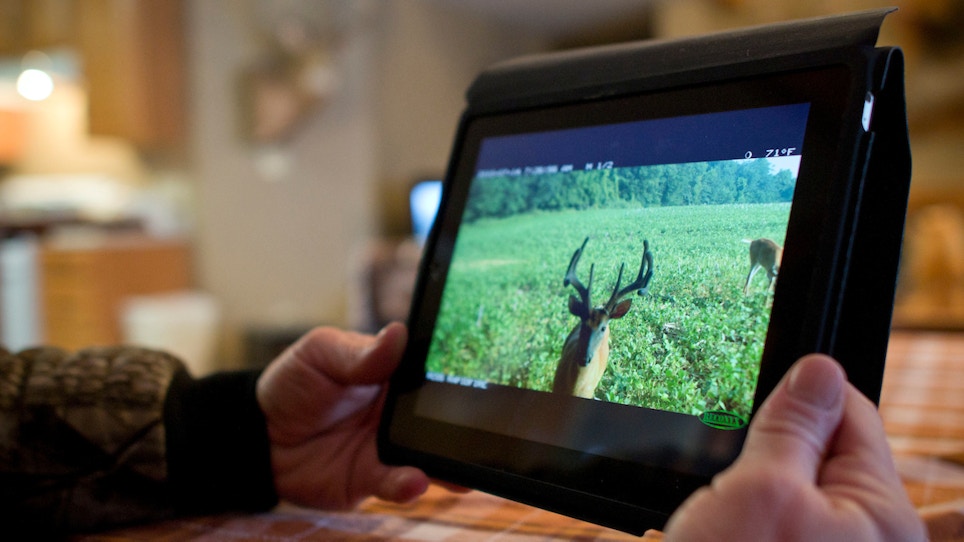Technology. Love it or hate it, it’s here, and impacting our everyday lives in ways my parents and grandparents could have never imagined. And the changes in technology available to Joe Average at reasonable cost keep coming at us at warp speed.
Mostly technology makes life better. But sometimes its use defeats the purpose. One example is the self-driving car, which could be a boon to the blind and others with disabilities. Yet the technology has evolved so fast that when a woman was killed by a self-driving car on March 18 in Arizona, society has taken a step back and asked some hard questions about when and where such vehicles should be allowed -- if at all.
In hunting, we’ve seen recent high-tech gizmos like the Tracking Point Precision-Guided Firearm featuring a fire-control system that virtually eliminates human error — it leverages the same tracking and fire-control technology found in advanced fighter jets. Then there was the use of drones, ultimately banned by the hunting community, who overwhelmingly agreed that such technology violates the spirit of fair chase.
Trail cameras: a history
The “Technology Toy de jour” to receive negative reactions around the country is the trail camera. Before diving into this topic, a basic history lesson.
In the “old days,”what we did was find a likely crossing, food source (including a bear bait), or funnel and use a whisk broom or shovel to clean off the ground so that when a critter came past we could read the tracks it left. If you wanted to get fancy, we might even use water to make the ground muddy.
When the concept of using “Trail Timers” and infrared devices to record game movement at specific locations came along, nobody thought much of it. I used ‘em both. The original Trail Timer was nothing more than a simple digital clock with a string you stretched across a trail, fence or creek crossing, or near a bear bait. The idea was a deer or bear would hit the string and stop the clock so you could pattern its movement through the area.

The original Trail Timer was nothing more than a simple digital clock with a string you stretched across a trail, fence or creek crossing, or near a bear bait. Photo: NewJerseyHunter.com
Later came the first electronic devices that used an infrared light. When an animal “broke the plane” and tripped the light, the camera would record both the time of the event and the number of times a critter passed through the beam in a given period of time. When I was baiting bears in Alaska, I had an infrared trail timer on each of my baits. When the counter showed me that there was lots of activity — and by that I mean a hundred or more hits in a 24-hour period — I would go sit in my treestand to see what exactly was causing such a ruckus. (I should mention that on more than one occasion a bear simply ate the device, which cost me the then outrageous sum of $150 to replace it.)
Next came the first scouting cameras, but these used old-style film cameras. Of course you had to visit the camera, replace the roll of film and rush it down to the local one-hour photo to get it developed and see what was going on. Because frequent visits to the camera were often made, one had to be extremely careful about disturbing game and/or polluting the area with human scent. This was, of course, extremely difficult to control completely, especially back in those days.
Then digital cameras replaced film cameras and, along with improvements in infrared technology, flash systems, reliability, battery life, the amount of data that could be stored on a SD card, and so on, the game changed exponentially. Throw in panoramic views, high-quality video capability, and the popularity of texting, social media, and the internet, and the world of scouting via the trail camera shot into the ionosphere.
Then there is the new generation of trail cameras that have all the aforementioned features (and a whole lot more), as well as the ability to transmit live, real times images and video both over the internet and via cellphone services to people who may not even be in the field and are, in fact, oftentimes far away. They’ve taken the trail camera thing above the ionosphere and into Deep Space.
Back to the present: has technology gone to far?
And now, just like the self-driving car and the drone, many sportsmen — and many state game departments — are questioning whether or not both the technology itself and the way it is employed, have gone too far. Questions arise like whether or not modern-game-camera technology and its use violate the tenants of fair chase; and whether or not their use negatively affect animal behavior and movement.
The latest example is in my home state of Arizona. At the state’s next Game Commission meeting, the group will consider changing what types of trail cameras are allowed for use, and where and how those that remain legal can be used. Currently they are considering banning live-action trail cameras, as well as prohibiting all camera use within a quarter mile of any water source.
Every five years in Arizona there is an open review under Article 3 by the Arizona Department of Game and Fish (AZDFG). A committee known as the “Fair Chase Committee,” which includes representatives from inside and outside the AZDFG, reviews various rules, including the take of wildlife. They also make recommendations on any changes deemed appropriate. And some believe trail camera use is pushing the fair-chase envelope.
AZDFG defines fair chase as “the ethical, sportsmanlike and lawful pursuit and take of free-range wildlife in a manner that does not give the hunter or angler improper advantage over such wildlife.” In addition to trail cameras, the department has already banned the use of drones and so-called “smart rifles.”
As defined in Commission Proposal R12-1-101 Definitions:
Define Developed Water Source: “Developed Water Source” means any developed, placed, or man-made structure that collects or stores water with the primary purpose of providing water for wildlife or livestock.
Define Live Action Trail Camera: “Live action trail camera” means an unmanned device capable of transmitting images, still photographs, video or satellite imagery, wirelessly to a remote device such as but not limited to a computer, smart phone or tablet. This does not include a trail camera that records photographic or video data for later use, provided the device is not capable of transmitting wirelessly.
R12-4-303 Unlawful Devices and Ammunition: Restrict the placement of live action trail cameras,
4) A person shall not use a live-action trail camera, or images from live-action, trail camera for the purpose of taking or aiding in the take of wildlife or locating wildlife for the purpose of taking or aiding in the take of wildlife.
5) A person shall not use any trail camera, or images from a trail camera, for the purpose of taking, or aiding in the take of wildlife or locating wildlife for the purpose of taking or aiding in the take of wildlife within one-fourth mile (440 yards) of a developed water source.
In layman’s terms, if enacted, residents of Arizona can no longer legally use trail cameras with wireless or satellite transmission capabilities, nor can residents legally place cameras on or within a quarter mile of any water source. Many in the Arizona hunting community believe that the commission will recommend the adoption of both regulations.
Opposition is building to proposed regulations on trail-camera technology
Trail-camera manufacturer Mark Cuddeback of Cuddeback Digital said this about a possible live-action camera ban:
“While I am not aware of state rules per se, this is my biggest concern with our future. My arguments are: 1) Images are not presented to the user/hunter in real time. There is a delay from minutes to hours before the images get to the users. We recommend hunters send images once or twice per day, as what is the value of getting images quickly when the user is often hundreds of miles away?; 2) Even with a short interval from images to hunter, the hunter would still have to get to the animal quickly and undetected. While possible, this is unlikely to happen very often; 3) The user is not on the property, if he was, I don’t think they would purchase a cell camera. The purpose of the camera is to receive images when away from the property; 4) Trail camera and radio cameras are a great help to biologists and researchers, without hunters purchasing these products the economics of scale would prohibit them from being sold or they would cost much, much more; 5) Will cheating happen? I am sure it would, but we allow crossbows and flashlights to be sold which are responsible for more poaching then a trail camera would ever be.
“The end result of this type of legislation is to penalize all hunters for a very small potential for abuse. Ten million hunters would lose access to products that make hunting more enjoyable and allows people to see animal activity in ways unachievable any other way. Radio cameras allow people to connect to nature in a way conventional trail camera cannot. Any product that gets people closer to the animals is good for conservation efforts. I have been in this industry since 1989 and I have seen the trend from ‘I want a camera to shoot deer’ to now ‘I want a camera to see deer.’ More and more hunters use cameras for enjoyment and not for scouting to shoot his next deer.”

Mark Cuddeback has developed products like the CuddeLink. This device transmits images from up to 15 remote cameras to one home image collection camera.
Jacob Edson and Ryan Bronson of Bushnell also weighed in.
“We understand the concerns in the arid southwest about disruption of wildlife around water sources,” said Bronson, Bushnell’s Director of Conservation for Bushnell Hunters. “One of the reasons that wireless trail cameras are a popular tool for hunters and wildlife watchers is that they limit disruption, and we believe there are opportunities to address fair-chase issues without banning these devices for all.”
“Bushnell is definitely opposed to the wireless transmission part of the regulation, especially since wireless cameras actually reduce human intrusion, which is the stated goal of these regulations,” said Edson, a communications specialist with Bushnell. “Also, it would take away products that are currently legal and owned by Arizona residents, and might not take into account further technological advances and trends that would make wireless transmission the standard in data storage and transfer.”
Those who don’t live in the arid southwest, where water sources are often few and far between, might have a difficult time understanding the proposed location rule. Hunters and professional guides/outfitters place trail cameras on these waterholes. I’ve actually come up to a small water source in Arizona and seen as many and a dozen cameras on it. Also there are a handful of outfitters that employ literally hundreds of cameras at any one time year-around. They essentially can keep track of most every deer and elk in a given game-management unit. Then they book clients to hunt specific animals they have pictures of.
Trail-camera restrictions in other states
This isn’t an issue unique to Arizona. In January, Chief Game Warden Tyler Turnipseed sent a memo to Nevada Board of Wildlife Commissioners, County Advisory Boards to Manage Wildlife, and Interested Publics that Nevada is proposing a change to trail-camera use in that state.
In part his memo read:
“The proposed regulation change would place limits on the use of trail cameras and similar devices. At its workshop on November 3, 2017, the Commission directed the Department to change the proposed regulation language to limit trail cameras in three ways: first, to prohibit transmitting trail cameras at any location and any time of the year; second, to prohibit the placement, maintenance and use of a trail camera within 300 feet of a spring, water source or artificial basin at any time of the year; and third, to prohibit the use of any trail camera at any location from August 1 through December 31. The regulation would further prohibit the placement, maintenance and use of a trail camera if it prevents wildlife from accessing, or alters the manner in which wildlife accesses a spring, water hole or artificial basin which is used by wildlife and collects water. The regulation defines a trail camera as any device which is not held or manually operated by a person and which is used to capture images or video using heat or motion to trigger the device.
“In simple terms, this regulation would prohibit trail cameras within 300 feet of a point source water at all times, transmitting cameras at all times, and any other camera from August 1 through December 31.”
Back east, on May 4, 2015 New Hampshire prohibited hunters “from using live-action game cameras while attempting to locate, surveil, aid or assist in any attempt to locate or take any game animal or furbearing animal during the same calendar day while the season is open.” A quick search of various state hunting regulations and upcoming proposals will show that many other states are contemplating changes both in what types of technology is allowed and how it can be utilized. Some have already made it illegal to use cameras during the hunting season.
There’s also a perception problem with many people who don’t hunt, but don't necessarily align with an anti-hunting stance either, who believe today’s hunters now rely too much on technology and aren't spending enough time in the woods both learning how to be a real woodsman, and experiencing the outdoors. One friend of mine said he thinks such people should have a decal that reads, “It’s the kill, not the skill.”
There’s no question that trail-camera technology is going to both rapidly become more sophisticated and more affordable. When it comes to the issue of fair chase, my questions are these: If you are not using it in real-time to make decisions, is it unethical? Does it still violate fair chase?
The issue of where cameras can and cannot be used, like scarce southwestern water sources, should be one for the individual states to make based on their management objectives. And there’s really no way to legislate knucklehead behavior, as is the case when you’re sitting one of these water holes and a guide or hunter decides to roar up on their ATV or in the truck to check their camera an hour before sundown. Yes, I’ve seen it happen. More than once.
What’s your take? Do you think live-action cameras should be legal all the time, legal but with restrictions placed on their use, or banned altogether? How about placing cameras on water holes in arid country? Or trail-camera use in general? I’d love to hear from you! Drop me a note at bob.robb@grandviewoutdoors.com and let’s chat!






